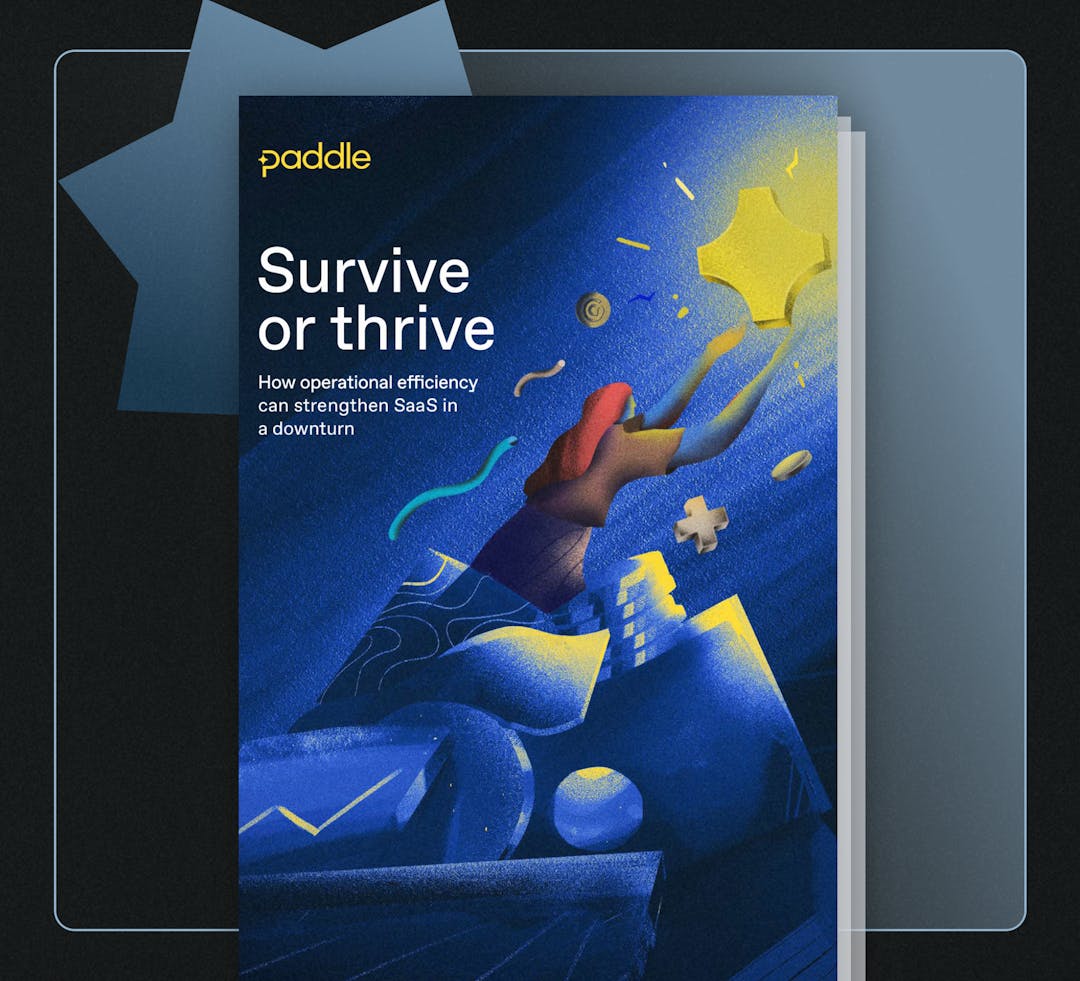Revenue delivery is something that all companies have - whether they realize it or not.
It’s the systems, processes, and people that organizations have in place to deliver revenue from customers to your business in an efficient and compliant way. It includes things like how you take payments, manage subscriptions, and ensure your complying with global tax and payments laws.
Typically – and this is especially true in the SaaS industry – the infrastructure you have to support your revenue delivery is assembled piece by piece as and when you come up against a new requirement. There’s no overarching design or plan for it. No strategy.
Having worked with thousands of software companies over the past nine years, I’ve seen time and time again how this approach only takes you so far.
Eventually, that collection of loosely integrated tools and processes becomes too unwieldy. The manual labor compounds. You find you’re incapable of keeping up with what’s required to support rapid business growth.
What’s needed is a revenue delivery strategy – the third pillar of growth.
The other two pillars are ones you probably take for granted:
- Your go-to-market strategy - where you define who you’re going to sell to and how
- And your product strategy - which sets out your product roadmap.
All three of these growth pillars influence and rely on each other for a business to achieve success. They need to be aligned.
What happens when you don’t pay enough attention to your revenue delivery strategy?
Two things:
- You lose out on revenue that’s otherwise ready for the taking
- And you drive up your costs of doing business
There are a few different ways you lose out on revenue if how you deliver it isn’t up to scratch.
These include blockers like payments failing because of fraud triggers, or loss of conversions due to a poorly designed payment experience. One of the biggest reasons is something we call the responsiveness gap.
Almost every successful SaaS company follows a similar pathway to growth.
Once you’re up and running in your local market, you’ll probably turn your attention to growing your customer base in other countries. Then you’ll think about introducing new products, plans, or add-ons to increase how much your customers are buying from you.
If you start by selling to smaller companies, at some point you’ll find more and more opportunities to sell to larger teams, pulling you up market and calling for an entirely new way of selling and delivering revenue. Or vice versa, you might find yourself having caught your fair share of big logos in your earlier days, and turning towards offering access to prosumers and smaller teams.
You’ll need to completely rethink your revenue delivery strategy to support a much larger scale of transactions and accounts in that case.
In every instance, the responsiveness gap comes into play when your strategy and infrastructure blocks or slows down your ability to put these different growth plays into action.
Engineering the means to introduce new pricing plans, support hybrid billing models, or offer a truly localized payments experience in different countries takes months or even entire quarters to implement. I’ve spoken to SaaS leaders who’ve admitted that implementing a price change took as long as two years.
That's right... TWO YEARS.
The time it’s taking you to implement this sort of stuff is costing you the money you would have been making if you were equipped and enabled to support these very predictable needs from the start, and could just hit “go” as soon as the time was right. This is exactly what the right revenue delivery strategy and optimized infrastructure can do for you.
Let’s turn to how your lack of a revenue delivery strategy is increasing the cost of doing business.
The responsiveness gap doesn’t just mean you lose out on the revenue you could be going after due to slow implementation. It also costs you the time and salary of those engineers tasked with bridging the gap.
Then there’s the compliance side of revenue delivery.
We’ll go into this a lot more next week, but the key thing to know here is that software is becoming an increasingly regulated market. This has huge implications for your finance and operations team’s headcount and adds the risk of hefty fines if you fail to comply.
As your company grows, fragmented revenue delivery infrastructure will hold you back time and time again as the needs of your business and your customers continue to evolve.
Today, take a look at your own infrastructure, and ask yourself how quickly are you ready to you seize your next growth opportunity?
Coming up in this series:
When global becomes local
What selling globally (which SaaS companies do as default) means for taking payments and staying compliant with tax regulations.
New products, new processes
What upselling or cross-selling new products means for your payment experiences, billing models, and reporting.
Selling to all sizes
What the move from selling to individuals to selling to large teams and companies (or vice versa) means for your infrastructure.
The price is right, or is it?
What experimenting with pricing can do for your growth and why it can be so difficult to do in practice.




